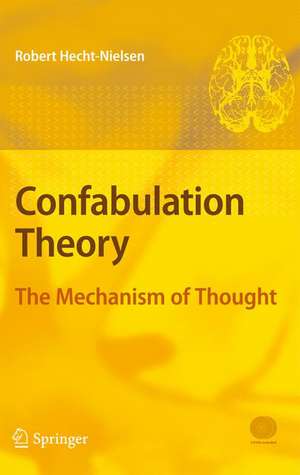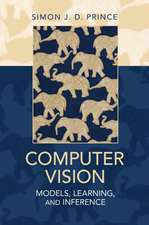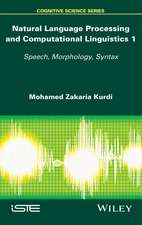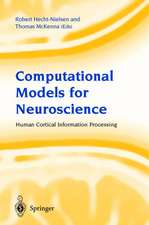Confabulation Theory: The Mechanism of Thought
Autor Robert Hecht-Nielsenen Limba Engleză Mixed media product – 5 iul 2007
Because of the theory’s implications for philosophy, education, medicine, anthropology and social science, this book will also be of interest to scientists in those domains.
| Toate formatele și edițiile | Preț | Express |
|---|---|---|
| Paperback (1) | 387.35 lei 6-8 săpt. | |
| Springer Berlin, Heidelberg – 30 apr 2017 | 387.35 lei 6-8 săpt. | |
| Mixed media product (1) | 536.74 lei 6-8 săpt. | |
| Springer Berlin, Heidelberg – 5 iul 2007 | 536.74 lei 6-8 săpt. |
Preț: 536.74 lei
Preț vechi: 670.92 lei
-20% Nou
Puncte Express: 805
Preț estimativ în valută:
102.71€ • 106.59$ • 85.85£
102.71€ • 106.59$ • 85.85£
Carte tipărită la comandă
Livrare economică 15-29 martie
Preluare comenzi: 021 569.72.76
Specificații
ISBN-13: 9783540496038
ISBN-10: 3540496033
Pagini: 256
Ilustrații: X, 245 p. With DVD.
Dimensiuni: 155 x 235 x 19 mm
Greutate: 0.56 kg
Ediția:2007
Editura: Springer Berlin, Heidelberg
Colecția Springer
Locul publicării:Berlin, Heidelberg, Germany
ISBN-10: 3540496033
Pagini: 256
Ilustrații: X, 245 p. With DVD.
Dimensiuni: 155 x 235 x 19 mm
Greutate: 0.56 kg
Ediția:2007
Editura: Springer Berlin, Heidelberg
Colecția Springer
Locul publicării:Berlin, Heidelberg, Germany
Public țintă
ResearchCuprins
Video Presentation Viewcells.- The Mathematics of Thought.- Cogent Confabulation.- Confabulation Neuroscience I.- The Mechanism of Thought.- Mechanization of Confabulation.- Confabulation Neuroscience II.
Notă biografică
Robert Hecht-Nielsen was made a Fellow of the IEEE in 1997 for leadership in practical applications of neural network technology. He was a pioneer in the development of neural networks and authored the first textbook on the subject, Neurocomputing (1989). He has been a member of the UCSD faculty since 1986.
Textul de pe ultima copertă
Confabulation theory offers the first complete detailed explanation of the mechanism of cognition, i.e., thinking, an essential information processing capability of all enbrained Earth animals (bees, octopi, trout, ravens, humans, et al.). Concentrating on the human case, this book offers an hypothesis for the neuronal implementation of cognition, and explores the mathematics and methods of application of its mechanism. Thinking turns out to be starkly alien in comparison with all known technological approaches to information processing. While probably not yet scientifically testable, confabulation theory seems consistent with the facts of neuroscience. Beyond science, any complete detailed explanation of cognition can be investigated by applying it technologically. Multiple experiments of this nature are described in this book in complete detail. The results suggest that confabulation theory can provide the universal platform for building intelligent machines. In short, this book explains how thinking works and establishes the foundation for building machines that think.
Because of the theory’s implications for philosophy, education, medicine, anthropology and social science, this book will also be of interest to scientists in those domains.
Because of the theory’s implications for philosophy, education, medicine, anthropology and social science, this book will also be of interest to scientists in those domains.
Caracteristici
First book on confabulation to offer a coherent, textbook style explanation of this new theory of cognition Includes supplementary material: sn.pub/extras










